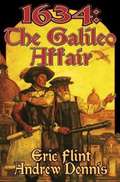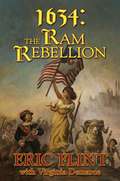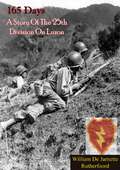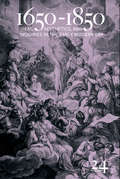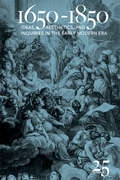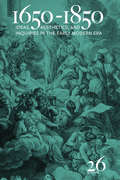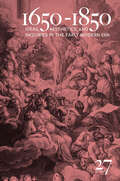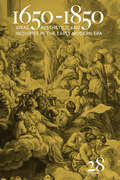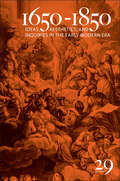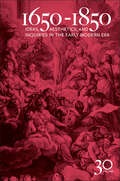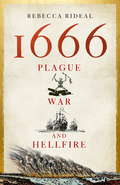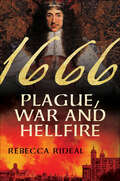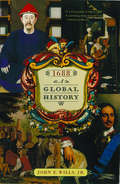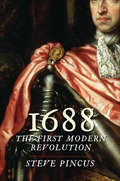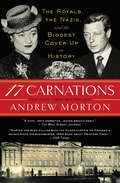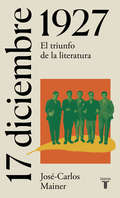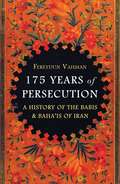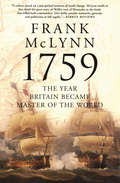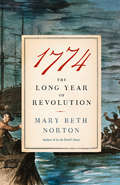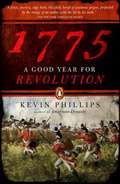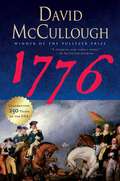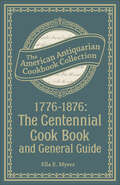- Table View
- List View
1634: The Galileo Affair
by Eric Flint Andrew DennisEUROPEAN CUNNING MEETS AMERICAN COURAGE The Thirty Years War continues to ravage 1 7th century Europe, but a new force is gathering power and influence: the United States of Europe, forged by an alliance between Gustavus Adolphus, King of Sweden, and the West Virginians from the 20th century led by Mike Stearns who were hurled centuries into the past by a mysterious cosmic accident. The democratic ideals of the USE have aroused the implacable hostility of Cardinal Richelieu, effective ruler of France, who has moved behind the scenes, making common cause with old enemies to stop this new threat to the privileged and powerful. But the USE is also working behind the scenes. A group of West Virginians have secretly traveled to Venice where their advanced medical knowledge may prevent the recurrence of the terrible plague which recently killed a third of the city-state's population. At the same time, the group hopes to establish commercial ties with Turkey's Ottoman Empire, then at the height of its power. And, most important, they hope to establish private diplomatic ties with the Vatican, exploiting Pope Urban VIU's misgivings about the actions of Richelieu and the Hapsburgs.
1634: The Ram Rebellion
by Eric Flint Virginia Easley DemarceFROM THE end flaps of the cover: The Thirty Years War continues to ravage 17th century Europe, but a new force is gathering power and influence: The Confederated Principalities of Europe, an alliance between Gustavus Adolphus, King of Sweden, and the town of Grantville, West Virginia. Grantville was hurled from the year 2000 to 1632 by a sort of cosmic joke or accident and has become, under the leadership of Mike Stearns, the embodiment of American Freedom: Liberty, with a sword in her hand. In Franconia, whose peasants have revolted several times, even before the arrival of the West Virginians, the living example of American freedom and justice has inspired the rise of an independent revolutionary movement, flying the banner of the head of a ram. The West Virginians fully approve of liberating the peasants from the nobility, but they are also aware of how revolutionary movements can lead to bloodbaths. And avoiding that deadly possibility will require all of their future knowledge plus all their plain old American horse-trading diplomacy.
165 Days: A Story Of The 25th Division On Luzon
by William De Jarnette Rutherford165 Days: A Story Of The 25th Division On Luzon by William De Jarnette Rutherfoord is a gripping and meticulously illustrated account of the 25th Infantry Division's pivotal role in the liberation of Luzon during World War II. Through vivid storytelling and firsthand accounts, Rutherfoord brings to life the harrowing experiences, intense battles, and unwavering determination of the soldiers who fought to reclaim the Philippines from Japanese occupation.The book covers the 165 days of relentless combat that defined the 25th Division’s campaign on Luzon, the largest and most strategically significant island in the Philippines. Rutherfoord, a member of the division, provides an insider's perspective on the brutal realities of jungle warfare, the challenges of supply and communication, and the indomitable spirit of the soldiers who faced overwhelming odds in their mission to secure victory.165 Days offers readers a detailed chronicle of the division’s maneuvers, from the initial landings to the final push that led to the liberation of Manila and the collapse of Japanese resistance. Rutherfoord captures the camaraderie, bravery, and sacrifices of the men in the division, highlighting both the human cost of war and the resilience of those who served.The book also delves into the strategic importance of the Luzon campaign, explaining how the actions of the 25th Division contributed to the broader Allied effort to defeat Japan in the Pacific Theater. Maps, photographs, and other illustrations complement the narrative, providing a comprehensive understanding of the terrain, tactics, and experiences of the soldiers.165 Days: A Story Of The 25th Division On Luzon is an essential read for military historians, veterans, and anyone interested in the Pacific War. William De Jarnette Rutherfoord’s compelling narrative honors the legacy of the 25th Infantry Division, offering a powerful testament to the courage and dedication of the men who fought to liberate the Philippines.This book stands as a tribute to the enduring spirit of the 25th Division, ensuring that the story of their sacrifice and triumph will never be forgotten.
1650-1850: Ideas, Aesthetics, and Inquiries in the Early Modern Era (Volume 24) (1650-1850 Ser. #Vol. 4)
by Kevin L. Cope1650-1850 publishes essays and reviews from and about a wide range of academic disciplines—literature (both in English and other languages), philosophy, art history, history, religion, and science. Interdisciplinary in scope and approach, 1650-1850 emphasizes aesthetic manifestations and applications of ideas, and encourages studies that move between the arts and the sciences—between the “hard” and the “humane” disciplines. The editors encourage proposals for “special features” that bring together five to seven essays on focused themes within its historical range, from the Interregnum to the end of the first generation of Romantic writers. While also being open to more specialized or particular studies that match up with the general themes and goals of the journal, 1650-1850 is in the first instance a journal about the artful presentation of ideas that welcomes good writing from its contributors. First published in 1994, 1650-1850 is currently in its 24th volume. ISSN 1065-3112. Published by Bucknell University Press. Distributed worldwide by Rutgers University Press.
1650-1850: Ideas, Aesthetics, and Inquiries in the Early Modern Era (Volume 25) (1650-1850 Ser. #Vol. 4)
by Jack Lynch Pat Rogers Kate Brown Sarah Stein Richard P. Heitzenrater Yu Liu Suzanne L. Barnett Mark G. Spencer Malcolm Jack Isabel Rivers Nigel Penn Robin Runia Samara Anne Cahill Claude Willan Howard Weinbrot Molly Marotta Anthony W Lee Daniel Gustafson James Horowitz Philip S. Palmer R.J.W. Mills Christopher Trigg Roy Bogas Gefen Bar-On Santor Jane R. Stevens Paula Pinto Tamara WagnerVolume 25 of 1650–1850: Ideas, Aesthetics, and Inquiries in the Early Modern Era investigates the local textures that make up the whole cloth of the Enlightenment. Ranging from China to Cheltenham and from Spinoza to civil insurrection, volume 25 celebrates the emergence of long-eighteenth-century culture from particularities and prodigies. Unfurling in the folds of this volume is a special feature on playwright, critic, and literary theorist John Dennis. Edited by Claude Willan, the feature returns a major player in eighteenth-century literary culture to his proper role at the center of eighteenth-century politics, art, publishing, and dramaturgy. This celebration of John Dennis mingles with a full company of essays in the character of revealing case studies. Essays on a veritable world of topics—on Enlightenment philosophy in China; on riots as epitomes of Anglo-French relations; on domestic animals as observers; on gothic landscapes; and on prominent literati such as Jonathan Swift, Arthur Murphy, and Samuel Johnson—unveil eye-opening perspectives on a “long” century that prized diversity and that looked for transformative events anywhere, everywhere, all the time. Topping it all off is a full portfolio of reviews evaluating the best books on the literature, philosophy, and the arts of this abundant era. Published by Bucknell University Press. Distributed worldwide by Rutgers University Press.
1650-1850: Ideas, Aesthetics, and Inquiries in the Early Modern Era (Volume 26) (1650-1850 #26)
by Andrew Connell John Burke John Sitter Greg Clingham Adam Rounce Jacob Sider Jost Christopher Johnson Taylor Corse Melvyn New Malcolm Jack Robin Runia Matthew Davis Gefen Bar-On Santor Robin Mills Norbert Col Michael Edson Mark A. Pedreira Linda L. Reesman Ashley Bender Gloria Eive Sören Hammerschmidt Paul DeGategnoVolume 26 of 1650–1850: Ideas, Aesthetics, and Inquiries in the Early Modern Era travels beyond the usual discussions of power, identity, and cultural production to visit the purlieus and provinces of Britain’s literary empire. Bulging at its bindings are essays investigating out-of-the-way but influential ensembles, whether female religious enthusiasts, annotators of Maria Edgeworth’s underappreciated works, or modern video-based Islamic super-heroines energized by Mary Wollstonecraft’s irreverance. The global impact of the local is celebrated in studies of the personal pronoun in Samuel Johnson’s political writings and of the outsize role of a difficult old codger in catalyzing the literary career of Charlotte Smith. Headlining a volume that peers into minute details in order to see the outer limits of Enlightenment culture is a special feature on metaphor in long-eighteenth-century poetry and criticism. Five interdisciplinary essays investigate the deep Enlightenment origins of a trope usually associated with the rise of Romanticism. Volume 26 culminates in a rich review section containing fourteen responses to current books on Enlightenment religion, science, literature, philosophy, political science, music, history, and art. About the annual journal 1650-1850 1650-1850 publishes essays and reviews from and about a wide range of academic disciplines: literature (both in English and other languages), philosophy, art history, history, religion, and science. Interdisciplinary in scope and approach, 1650-1850 emphasizes aesthetic manifestations and applications of ideas, and encourages studies that move between the arts and the sciences—between the “hard” and the “humane” disciplines. The editors encourage proposals for special features that bring together five to seven essays on focused themes within its historical range, from the Interregnum to the end of the first generation of Romantic writers. While also being open to more specialized or particular studies that match up with the general themes and goals of the journal, 1650-1850 is in the first instance a journal about the artful presentation of ideas that welcomes good writing from its contributors. ISSN 1065-3112. Published by Bucknell University Press. Distributed worldwide by Rutgers University Press.
1650-1850: Ideas, Aesthetics, and Inquiries in the Early Modern Era (Volume 27) (1650-1850 #27)
by Elizabeth Sauer Felicity Nussbaum Daniel O'Quinn Lisa Walters Betty Joseph Mita Choudhury Chris Barrett Anthony W. Lee Samara Anne Cahill Gefen Bar-On Santor Daniel Livesay Stephanie Howard-Smith Jennifer L. Hargrave Linda L. Reesman Su Fang Ng Matthew Goldmark Billie Lythberg David Mazella Ana Schwartz Brandie Siegfried Daniel Vitkus Chi-Ming Yang Andrew Black Erica Johnson Edwards James Hamby Seow-Chin Ong Jacqy SharpeRigorously inventive and revelatory in its adventurousness, 1650–1850 opens a forum for the discussion, investigation, and analysis of the full range of long-eighteenth-century writing, thinking, and artistry. Combining fresh considerations of prominent authors and artists with searches for overlooked or offbeat elements of the Enlightenment legacy, 1650–1850 delivers a comprehensive but richly detailed rendering of the first days, the first principles, and the first efforts of modern culture. Its pages open to the works of all nations and language traditions, providing a truly global picture of a period that routinely shattered boundaries. Volume 27 of this long-running journal is no exception to this tradition of focused inclusivity. Readers will travel through a blockbuster special feature on the topic of worldmaking and other worlds—on the Enlightenment zest for the discovery, charting, imagining, and evaluating of new worlds, envisioned worlds, utopian worlds, and worlds of the future. Essays in this enthusiastically extraterritorial offering escort readers through the science-fictional worlds of Lady Cavendish, around European gardens, over the high seas, across the American frontiers, into forests and exotic ecosystems, and, in sum, into the unlimited expanses of the Enlightenment mind. Further enlivening the volume is a cavalcade of full-length book reviews evaluating the latest in eighteenth-century scholarship.
1650-1850: Ideas, Aesthetics, and Inquiries in the Early Modern Era (Volume 28) (1650-1850 #28)
by Kevin L. CopeRigorously inventive and revelatory in its adventurousness, 1650–1850 opens a forum for the discussion, investigation, and analysis of the full range of long-eighteenth-century writing, thinking, and artistry. Combining fresh considerations of prominent authors and artists with searches for overlooked or offbeat elements of the Enlightenment legacy, 1650–1850 delivers a comprehensive but richly detailed rendering of the first days, the first principles, and the first efforts of modern culture. Its pages open to the works of all nations and language traditions, providing a truly global picture of a period that routinely shattered boundaries. Volume 28 of this long-running journal is no exception to this tradition of focused inclusivity. Readers will experience two blockbuster multi-author special features that explore both the deep traditions and the new frontiers of early modern studies: one that views adaptation and digitization through the lens of “Sterneana,” the vast literary and cultural legacy following on the writings of Laurence Sterne, a legacy that sweeps from Hungarian renditions of the puckish novelist through the Bloomsbury circle and on into cybernetics, and one that pays tribute to legendary scholar Irwin Primer by probing the always popular but also always challenging writings of that enigmatic poet-philosopher, Bernard Mandeville. All that, plus the usual cavalcade of full-length book reviews. ISSN: 1065-3112 Published by Bucknell University Press, distributed worldwide by Rutgers University Press.
1650-1850: Ideas, Aesthetics, and Inquiries in the Early Modern Era (Volume 29) (1650-1850 #29)
by Deborah Kennedy Greg Clingham Paul Tankard Christopher Johnson Susan Spencer Elizabeth Kraft Anthony W. Lee Ileana Baird Christina Ionescu Christopher Trigg Gefen Bar-On Santor John Knapp Paul DeGategno Jeanne M. Britton Angelina Dulong Mona Scheuermann Leigh D. Dillard Catherine J. Theobald Timothy Erwin Laurence Roussillon-Constanty Yanzhang Cui Duane Coltharp Thomas Hothem John C. Traver Courtney A. HoffmanExploratory, investigative, and energetically analytical, 1650–1850 covers the full expanse of long eighteenth-century thought, writing, and art while delivering abundant revelatory detail. Essays on well-known cultural figures combine with studies of emerging topics to unveil a vivid rendering of a dynamic period, simultaneously committed to singular genius and universal improvement. Welcoming research on all nations and language traditions, 1650–1850 invites readers into a truly global Enlightenment. Topics in volume 29 include Samuel Johnson’s notions about the education of women and a refreshing account of Sir Joseph Banks’s globetrotting. A guest-edited, illustration-rich, interdisciplinary special feature explores the cultural implications of water. As always, 1650–1850 culminates in a bevy of full-length book reviews critiquing the latest scholarship on long-established specialties, unusual subjects, and broad reevaluations of the period. ISSN 1065-3112 Published by Bucknell University Press, distributed worldwide by Rutgers University Press.
1650-1850: Ideas, Aesthetics, and Inquiries in the Early Modern Era (Volume 30) (1650-1850)
by Christopher D. Johnson Susan Spencer Lynn Festa Anthony W. Lee Victoria Barnett-Woods Ashley Bender Yvonne Fuentes Melanie Hayes Pamela F. Phillips Michael J. Mulryan Duane Coltharp Courtney A. Hoffman Flavio Gregori Steven Minuk Andie Barrow Ross W. Beales Jr. Stephanie Koscak Corey Risinger Youenhee Kho Donald W. Nichol Christopher VilmarExploratory, investigative, and energetically analytical, 1650–1850 covers the full expanse of long-eighteenth-century thought, writing, and art while delivering abundant revelatory detail. Essays on well-known cultural figures combine with studies of emerging topics to unveil a vivid rendering of a dynamic period, simultaneously committed to singular genius and universal improvement. The contributors to volume 30 join with Enlightenment thinkers in pulling, pushing, and stretching the elastic boundaries of human experience. Essays on comical apocalypticism, the evolution of satire, and the Asian periphery of English literature open a volume that offers two special features on extreme aspects of a modernizing world. The first probes the undiscovered world of last wills and testaments, while the second explores the soaring world of eighteenth-century birds. As always, 1650–1850 culminates in a bevy of book reviews critiquing the latest scholarship on long-established specialties, unusual subjects, and broad reevaluations of the period. Published by Bucknell University Press. Distributed worldwide by Rutgers University Press. ISSN: 1065-3112
1666: Plague, War and Hellfire
by Rebecca Rideal1666 was a watershed year for England. The outbreak of the Great Plague, the eruption of the second Dutch War and the Great Fire of London all struck the country in rapid succession and with devastating repercussions.Shedding light on these dramatic events, historian Rebecca Rideal reveals an unprecedented period of terror and triumph. Based on original archival research and drawing on little-known sources, 1666: Plague, War and Hellfire takes readers on a thrilling journey through a crucial turning point in English history, as seen through the eyes of an extraordinary cast of historical characters. While the central events of this significant year were ones of devastation and defeat, 1666 also offers a glimpse of the incredible scientific and artistic progress being made at that time, from Isaac Newton's discovery of gravity to Robert Hooke's microscopic wonders. It was in this year that John Milton completed Paradise Lost, Frances Stewart posed for the now-iconic image of Britannia, and a young architect named Christopher Wren proposed a plan for a new London - a stone phoenix to rise from the charred ashes of the old city.With flair and style, 1666 shows a city and a country on the cusp of modernity, and a series of events that forever altered the course of history.
1666: Plague, War and Hellfire
by Rebecca Rideal1666 was a watershed year for England. The outbreak of the Great Plague, the eruption of the second Dutch War and the Great Fire of London all struck the country in rapid succession and with devastating repercussions.Shedding light on these dramatic events, historian Rebecca Rideal reveals an unprecedented period of terror and triumph. Based on original archival research and drawing on little-known sources, 1666: Plague, War and Hellfire takes readers on a thrilling journey through a crucial turning point in English history, as seen through the eyes of an extraordinary cast of historical characters. While the central events of this significant year were ones of devastation and defeat, 1666 also offers a glimpse of the incredible scientific and artistic progress being made at that time, from Isaac Newton's discovery of gravity to Robert Hooke's microscopic wonders. It was in this year that John Milton completed Paradise Lost, Frances Stewart posed for the now-iconic image of Britannia, and a young architect named Christopher Wren proposed a plan for a new London - a stone phoenix to rise from the charred ashes of the old city.With flair and style, 1666 shows a city and a country on the cusp of modernity, and a series of events that forever altered the course of history.
1666: Plague, War and Hellfire
by Rebecca Rideal1666 was a watershed year for England. An outbreak of the Great Plague, the eruption of the second Dutch War, and the devastating Great Fire of London all struck the country in rapid succession and with devastating repercussions.Shedding light on these dramatic events and their context, historian Rebecca Rideal reveals an unprecedented period of terror and triumph. Based in original archival research drawing on little-known sources, 1666 opens with the fiery destruction of London before taking readers on a thrilling journey through a crucial turning point in English history as seen through the eyes of an extraordinary cast of historical characters. While the central events of this significant year were ones of devastation and defeat, 1666 also offers a glimpse of the incredible scientific and artistic progress being made at that time, from Isaac Newton’s discovery of gravity to the establishment of The London Gazette. It was in this year that John Milton completed Paradise Lost, Frances Stewart posed for the iconic image of Britannia, and a young architect named Christopher Wren proposed a plan for a new London—a stone phoenix to rise from the charred ashes of the old city.With flair and style, 1666 exposes readers to a city and a country on the cusp of modernity and a series of events that altered the course of history.
1688: A Global History
by John E. Wills Jr.A vivid picture of the world centered around that pivotal year.
1688: A Global History
by John E. Wills Jr."A totally absorbing book...imaginative and erudite, full of startling juxtapositions and flashes of real perception."--Jonathan D. Spence John E. Wills's masterful history ushers us into the worlds of 1688, from the suicidal exaltation of Russian Old Believers to the ravishing voice of the haiku poet Basho. Witness the splendor of the Chinese imperial court as the Kangxi emperor publicly mourns the death of his grandmother and shrewdly consolidates his power. Join the great caravans of Muslims on their annual pilgrimage from Damascus and Cairo to Mecca. Walk the pungent streets of Amsterdam and enter the Rasp House, where vagrants, beggars, and petty criminals labored to produce powdered brazilwood for the dyeworks. Through these stories and many others, Wills paints a detailed picture of how the global connections of power, money, and belief were beginning to lend the world its modern form. "A vivid picture of life in 1688...filled with terrifying violence, frightening diseases...comfortingly familiar human kindnesses...and the intellectual achievements of Leibniz, Locke, and Newton."--Publishers Weekly
1688: The First Modern Revolution
by Steve PincusFor two hundred years historians have viewed England's Glorious Revolution of 1688-1689 as an un-revolutionary revolution--bloodless, consensual, aristocratic, and above all, sensible. In this brilliant new interpretation Steve Pincus refutes this traditional view. By expanding the interpretive lens to include a broader geographical and chronological frame, Pincus demonstrates that England's revolution was a European event, that it took place over a number of years, not months, and that it had repercussions in India, North America, the West Indies, and throughout continental Europe. His rich historical narrative, based on masses of new archival research, traces the transformation of English foreign policy, religious culture, and political economy that, he argues, was the intended consequence of the revolutionaries of 1688-1689. James II developed a modernization program that emphasized centralized control, repression of dissidents, and territorial empire. The revolutionaries, by contrast, took advantage of the new economic possibilities to create a bureaucratic but participatory state. The postrevolutionary English state emphasized its ideological break with the past and envisioned itself as continuing to evolve. All of this, argues Pincus, makes the Glorious Revolution--not the French Revolution--the first truly modern revolution. This wide-ranging book reenvisions the nature of the Glorious Revolution and of revolutions in general, the causes and consequences of commercialization, the nature of liberalism, and ultimately the origins and contours of modernity itself.
17 Carnations: The Royals, the Nazis, and the Biggest Cover-Up in History
by Andrew MortonA meticulously researched historical tour de force about the secret ties among Franklin D. Roosevelt, Winston Churchill, the Duke of Windsor, and Adolf Hitler before, during, and after World War II.Andrew Morton tells the story of the feckless Edward VIII, later Duke of Windsor, his American wife, Wallis Simpson, the bizarre wartime Nazi plot to make him a puppet king after the invasion of Britain, and the attempted cover-up by Churchill, General Eisenhower, and King George VI of the duke's relations with Hitler. From the alleged affair between Simpson and the German foreign minister to the discovery of top secret correspondence about the man dubbed "the traitor king" and the Nazi high command, this is a saga of intrigue, betrayal, and deception suffused with a heady aroma of sex and suspicion.For the first time, Morton reveals the full story behind the cover-up of those damning letters and diagrams: the daring heist ordered by King George VI, the smooth duplicity of a Soviet spy as well as the bitter rows and recriminations among the British and American diplomats, politicians, and academics. Drawing on FBI documents, exclusive pictures, and material from the German, Russian, and British royal archives, as well as the personal correspondence of Churchill, Eisenhower, and the Windsors themselves, 17 CARNATIONS is a dazzling historical drama, full of adventure, intrigue, and startling revelations, written by a master of the genre.
17 de diciembre de 1927: El día en que nació una generación literaria
by José-Carlos MainerNo todos los días son iguales. Una colección única que cuenta nuestro largo siglo XX en 7 libros para 7 fechas clave. Solemos abordar la historia a partir de arcos de tiempo dilatados. Pero ¿qué sucede si, por una vez, centramos la atención en los instantes concretos que más han marcado nuestro pasado colectivo? Los protagonistas, sus acciones, sus emociones, sus deseos, sus dudas y sus errores pasan al centro del relato, irrumpen con la fuerza de la imprevisibilidad, y los revivimos como si fuera la primera vez. En esta novedosa colección, algunos de los mejores historiadores nos muestran que nada puede darse por sentado, y cómo acontecimientos concretos pueden dejar un rastro profundo en un país. El 17 de diciembre de 1927, un grupo de jóvenes poetas paseaba sus versos y sus resacas por Sevilla, bajo la excusa del tercer centenario de la muerte de Góngora. Formaban parte no tanto de una generación como de una maniobra de afirmación de grupo, pero ahí nace «el 27», y cristaliza la llamada Edad de Plata de la cultura española. El profesor Mainer, uno de los mayores expertos sobre esa época, reconstruye la época, el homenaje y lo que supuso: fundamentalmente, el triunfo de la literatura.
175 Years of Persecution: A History of the Babis & Baha'is of Iran
by Fereydun VahmanFor almost two centuries, followers of the Baha&’i faith, Iran&’s largest religious minority, have been persecuted by the state. They have been made scapegoats for the nation&’s ills, branded enemies of Islam and denounced as foreign agents. Since the Islamic Revolution of 1979 Baha&’is have been barred from entering the nation&’s universities, more than two hundred have been executed, and hundreds more imprisoned and tortured. Now, however, Iran is at a turning point. A new generation has begun to question how the Baha&’is have been portrayed by the government and the clergy, and called for them to be given equal rights as fellow citizens. In documenting, for the first time, the plight of this religious community in Iran since its inception, Fereydun Vahman also reveals the greater plight of a nation aspiring to develop a modern identity built on respect for diversity rather than hatred and self-deception.
1759: The Year Britain Became Master of the World
by Frank McLynnIf not for the events of 1759, the entire history of the world would have been different. Called the "Year of Victories," 1759 was the fourth year of the Seven Years, or the French-and-Indian War and defeat of the French paved the way for the global hegemony of the English language. Guiding us through England's conquests (and often extremely narrow victories), Frank McLynn (Wagons West) brilliantly interweaves primary sources, ranging from material in the Vatican archives to oral histories of Native Americans. In a stunning chronicle of a pivotal year in world history, he controversially concludes that the birth of the great British Empire was more a result of luck than of rigorous planning.
1774: The Long Year of Revolution
by Mary Beth NortonFrom one of our most acclaimed and original colonial historians, a Pulitzer Prize finalist, 2018 president of the American Historical Association, a groundbreaking book--the first to look at the critical "long year" of 1774 and the revolutionary change that took place from December 1773 to mid-April 1775, from the Boston Tea Party and the first Continental Congress to the Battles of Lexington and Concord.This masterly work of historical writing, Mary Beth Norton's first in almost a decade, looks at the sixteen months during which the traditional loyalists to King George III began their discordant "discussions" that led to their acceptance of the inevitability of war against the British Empire and to the clashes at Lexington and Concord in mid-April 1775. Drawing extensively on pamphlets, newspapers, and personal correspondence, Norton reconstructs colonial political discourse as it happened, showing the vigorous campaign mounted by conservatives criticizing congressional actions. But by then it was too late. In early 1775, governors throughout the colonies informed colonial officials in London that they were unable to thwart the increasing power of the committees and their allied provincial congresses. Although the Declaration of Independence would not be formally adopted until July 1776, Americans, even before the outbreak of war in April 1775, had in effect "declared independence" by obeying the decrees of their new provincial governments rather than colonial officials.The much-anticipated new book by one of America's most dazzling historians--the culmination of more than four decades of Norton's research and thought.
1775: A Good Year for Revolution
by Kevin PhillipsWhat if the year we have long commemorated as America's defining moment was in fact misleading? What if the real events that signaled the historic shift from colony to country took place earlier, and that the true story of our nation's emergence reveals a more complicated -- and divisive -- birth process?In this major new work, iconoclastic historian and political chronicler Kevin Phillips upends the conventional reading of the American Revolution by puncturing the myth that 1776 was the struggle's watershed year. Mythology and omission have elevated 1776, but the most important year, rarely recognized, was 1775: the critical launching point of the war and Britain's imperial outrage and counterattack and the year during which America's commitment to revolution took bloody and irreversible shape. Phillips focuses on the great battlefields and events of 1775 -- Congress's warlike economic ultimatums to king and parliament, New England's rage militaire, the panicked concentration of British troops in militant but untenable Boston, the stunning expulsion of royal governors up and down the seaboard, and the new provincial congresses and many hundreds of local committees that quickly reconstituted local authority in Patriot hands. These onrushing events delivered a sweeping control of territory and local government to the Patriots, one that Britain was never able to overcome. Seventeen seventy-five was the year in which Patriots captured British forts and fought battles from the Canadian frontier to the Carolinas, obtained the needed gunpowder in machinations that reached from the Baltic to West Africa and the Caribbean, and orchestrated the critical months of nation building in the backrooms of a secrecy-shrouded Congress. As Phillips writes, "The political realignment achieved amid revolution was unique -- no other has come with simultaneous ballots and bullets. " Surveying the political climate, economic structures, and military preparations, as well as the roles of ethnicity, religion, and class, Phillips tackles the eighteenth century with the same skill and perception he has shown in analyzing contemporary politics and economics. He mines rich material as he surveys different regions and different colonies and probes how the varying agendas and expectations at the grassroots level had a huge effect on how the country shaped itself. He details often overlooked facts about the global munitions trade; about the roles of Indians, slaves, and mercenaries; and about the ideological and religious factors that played into the revolutionary fervor. The result is a dramatic account brimming with original insights about the country we eventually became. Kevin Phillips's 1775 revolutionizes our understanding of America's origins.
1776: 1776, Brave Companions, The Great Bridge, John Adams, The Johnstown Flood, Mornings On Horseback, Path Between The Seas, Truman, The Course Of Human Events
by David McCulloughAmerica&’s beloved and distinguished historian presents, in a book of breathtaking excitement, drama, and narrative force, the stirring story of the year of our nation&’s birth, 1776, interweaving, on both sides of the Atlantic, the actions and decisions that led Great Britain to undertake a war against her rebellious colonial subjects and that placed America&’s survival in the hands of George Washington.In this masterful book, David McCullough tells the intensely human story of those who marched with General George Washington in the year of the Declaration of Independence—when the whole American cause was riding on their success, without which all hope for independence would have been dashed and the noble ideals of the Declaration would have amounted to little more than words on paper. Based on extensive research in both American and British archives, 1776 is a powerful drama written with extraordinary narrative vitality. It is the story of Americans in the ranks, men of every shape, size, and color, farmers, schoolteachers, shoemakers, no-accounts, and mere boys turned soldiers. And it is the story of the King&’s men, the British commander, William Howe, and his highly disciplined redcoats who looked on their rebel foes with contempt and fought with a valor too little known. Written as a companion work to his celebrated biography of John Adams, David McCullough&’s 1776 is another landmark in the literature of American history.
1776–1876: The Centennial Cook Book and General Guide (American Antiquarian Cookbook Collection)
by Ella E. MyersPublished in Philadelphia in 1876, this volume in the American Antiquarian Cookbook Collection provides information about recipes and other cultural information from the 100 years between 1776 and 1876, divided into four sections: Cookery, Medical Department, Farming and Agriculture, and Events, and was published to celebrate the nation&’s first centennial. 1776-187: The Centennial Cook Book and General Guide contains over 1,000 recipes gathered by author Mrs. Ella E. Myers, who states in the preface, &“To compile and issue a work of this kind that would be perfect, has been my particular aim, and, I believe that I have succeeded.&” Myers confirms that &“each and every&” recipe has been &“carefully analyzed and tested by me&” to ensure the highest of quality. Furthermore, Myers also states that the recipes were designed to only use quantities and ingredients absolutely necessary, and because of this, will save readers significant money. Besides just recipes and frugality, the hefty tome also contains sections on medicinal cures, planting and farming, and historical events of Philadelphia. Complete with some of the author&’s own recipes (marked as such), 1776-1876 includes dishes such as Common Sense Biscuit, Corn Meal Muffins, Orange Biscuits, and Potato Fritters. With tested, economical recipes as well as medicinal and agricultural tips, 1776-1876: The Centennial Cook Book provides an accurate, informative, and intriguing picture of American lifestyles in the first 100 years of the United States. This edition of 1776-1876: The Centennial Cook Book and General Guide was reproduced by permission from the volume in the collection of the American Antiquarian Society, Worcester, Massachusetts. Founded in 1812 by Isaiah Thomas, a Revolutionary War patriot and successful printer and publisher, the Society is a research library documenting the life of Americans from the colonial era through 1876. The Society collects, preserves, and makes available as complete a record as possible of the printed materials from the early American experience. The cookbook collection includes approximately 1,100 volumes.
1776–1876: The Centennial Cook Book and General Guide (American Antiquarian Cookbook Collection)
by Ella E. MyersPublished in Philadelphia in 1876, this volume in the American Antiquarian Cookbook Collection provides information about recipes and other cultural information from the 100 years between 1776 and 1876, divided into four sections: Cookery, Medical Department, Farming and Agriculture, and Events, and was published to celebrate the nation&’s first centennial. 1776-187: The Centennial Cook Book and General Guide contains over 1,000 recipes gathered by author Mrs. Ella E. Myers, who states in the preface, &“To compile and issue a work of this kind that would be perfect, has been my particular aim, and, I believe that I have succeeded.&” Myers confirms that &“each and every&” recipe has been &“carefully analyzed and tested by me&” to ensure the highest of quality. Furthermore, Myers also states that the recipes were designed to only use quantities and ingredients absolutely necessary, and because of this, will save readers significant money. Besides just recipes and frugality, the hefty tome also contains sections on medicinal cures, planting and farming, and historical events of Philadelphia. Complete with some of the author&’s own recipes (marked as such), 1776-1876 includes dishes such as Common Sense Biscuit, Corn Meal Muffins, Orange Biscuits, and Potato Fritters. With tested, economical recipes as well as medicinal and agricultural tips, 1776-1876: The Centennial Cook Book provides an accurate, informative, and intriguing picture of American lifestyles in the first 100 years of the United States. This edition of 1776-1876: The Centennial Cook Book and General Guide was reproduced by permission from the volume in the collection of the American Antiquarian Society, Worcester, Massachusetts. Founded in 1812 by Isaiah Thomas, a Revolutionary War patriot and successful printer and publisher, the Society is a research library documenting the life of Americans from the colonial era through 1876. The Society collects, preserves, and makes available as complete a record as possible of the printed materials from the early American experience. The cookbook collection includes approximately 1,100 volumes.
